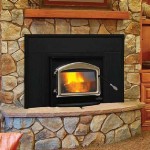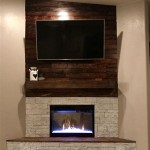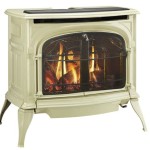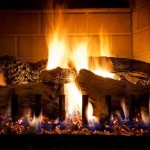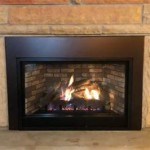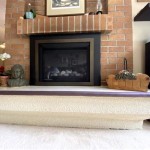Traditional Stone Fireplace Ideas: Timeless Warmth and Character
The traditional stone fireplace represents a cornerstone of home design, evoking feelings of comfort, warmth, and enduring strength. Beyond its functional role in providing heat, a stone fireplace serves as a captivating focal point, lending character and rustic elegance to any living space. The selection of stone type, design, and integration within the room's architecture are crucial considerations in crafting a truly timeless and aesthetically pleasing fireplace.
This article explores various facets of traditional stone fireplaces, delving into different stone options, design considerations, and construction techniques to provide a comprehensive understanding of this enduring architectural feature. From fieldstone to river rock, and from dry-stacked installations to intricately mortared designs, the possibilities are vast and offer ample opportunity for personalization.
Choosing the Right Stone for Your Fireplace
The type of stone selected significantly impacts the overall aesthetic of the fireplace. Each stone variety possesses unique characteristics in terms of color, texture, and size, contributing to a distinct visual appeal. The selection process should consider not only the desired look but also the stone's durability, availability, and cost.
Fieldstone: Characterized by its irregular shapes and natural variations, fieldstone imparts a rustic and organic feel. Typically gathered directly from fields, this stone offers a diverse range of colors and textures, reflecting the local geology. The random patterns created in a fieldstone fireplace lend a sense of authenticity and timelessness.
River Rock: Smooth and rounded by the natural action of water, river rock provides a softer, more contemporary take on the traditional stone fireplace. The various colors and sizes of river rock create a visually appealing mosaic, often exhibiting shades of gray, brown, and tan. This stone type is particularly well-suited for homes with a relaxed and natural aesthetic.
Limestone: A sedimentary rock known for its consistent color and fine-grained texture, limestone offers a more refined and elegant appearance. Its neutral tones, typically ranging from cream to light gray, make it a versatile choice that complements a variety of interior design styles. Limestone is relatively easy to work with, allowing for intricate carvings and detailing.
Slate: Distinguished by its layered structure and dark, dramatic hues, slate provides a sophisticated and contemporary aesthetic. Its naturally cleft surface adds textural interest, while its durability ensures long-lasting performance. Slate fireplaces often feature clean lines and a minimalist design, making them a suitable choice for modern or transitional homes.
Granite: Renowned for its exceptional strength and durability, granite is a premium stone option that exudes luxury and permanence. Its speckled texture and wide range of colors, from gray and black to pink and red, offer a unique visual appeal. Granite fireplaces are a significant investment, but their longevity and timeless beauty make them a worthwhile addition to any home.
Beyond the inherent characteristics of the stone, the surface finish also influences the final appearance of the fireplace. Options include honed, polished, and natural cleft finishes, each providing a distinct level of texture and sheen.
Design Considerations for a Traditional Stone Fireplace
Beyond the selection of stone, the overall design of the fireplace plays a critical role in achieving the desired aesthetic. Factors such as size, shape, hearth design, and mantel selection all contribute to the fireplace's visual impact. Careful consideration should be given to the room's dimensions, architectural style, and existing décor to ensure a cohesive and harmonious design.
Size and Proportion: The size of the fireplace should be proportionate to the size of the room in which it is located. A fireplace that is too large can overwhelm a small space, while a fireplace that is too small may appear insignificant in a large room. The height of the fireplace, the width of the firebox, and the depth of the hearth should all be carefully considered.
Hearth Design: The hearth serves as a protective barrier between the firebox and the surrounding flooring. It can be constructed from a variety of materials, including stone, brick, and tile. The hearth can be flush with the floor or raised, depending on the desired aesthetic and the room's design. A raised hearth provides additional seating and visual interest.
Mantel Selection: The mantel is a decorative shelf located above the firebox. It provides a focal point for displaying artwork, photographs, and other decorative items. Mantels can be crafted from a variety of materials, including wood, stone, and metal. The style of the mantel should complement the overall design of the fireplace and the room. A rustic wooden mantel, for example, would be a fitting choice for a fieldstone fireplace, while a sleek stone mantel would complement a slate fireplace.
Firebox Design: The firebox is the chamber in which the fire burns. Its design affects not only the fireplace's efficiency but also its aesthetic appeal. Traditional fireboxes are typically constructed of firebrick, which is a heat-resistant material that can withstand high temperatures. The shape and size of the firebox should be appropriate for the intended use of the fireplace, whether it is primarily for heat or for ambiance.
Mortar Options: The choice of mortar color and style affects the overall look of the fireplace. A recessed mortar joint will have a more rugged and rustic look, especially when paired with dark colored mortar. This can give the impression of older, more weathered stone. Conversely, a flush mortar joint combined with a lighter colored mortar will have a modern and more polished look.
Integrating with the Room: The fireplace should be seamlessly integrated into the room's overall design. This includes considering the placement of furniture, the color palette of the walls and flooring, and the style of the lighting fixtures. The fireplace should be a focal point, but it should not compete with other elements in the room. Strategic placement of artwork, mirrors, and lighting can enhance the fireplace's visual impact.
Construction Techniques and Considerations
The construction of a stone fireplace requires careful planning and execution to ensure both structural integrity and aesthetic appeal. Proper foundation preparation, stone selection, and mortar application are all critical to the success of the project. It is highly recommended to engage a qualified and experienced mason for the construction of a stone fireplace, as improper installation can lead to safety hazards and costly repairs.
Foundation Preparation: A solid and stable foundation is essential for supporting the weight of a stone fireplace. The foundation should be constructed of concrete or reinforced concrete and should extend below the frost line to prevent shifting due to freezing and thawing cycles. The foundation should be level and properly sized to accommodate the dimensions of the fireplace.
Stone Selection and Preparation: The stones should be carefully selected and prepared before installation. This includes cleaning the stones to remove dirt and debris, sorting them by size and shape, and cutting them to fit as needed. The stones should be arranged in a aesthetically pleasing pattern that minimizes gaps and maximizes visual appeal. The pattern can be random or organized, depending on the desired look.
Mortar Application: Mortar is the binding agent that holds the stones together. It should be applied carefully and evenly to ensure a strong and durable bond. The type of mortar should be appropriate for the type of stone being used. The mortar joints should be properly filled and finished to create a smooth and visually appealing surface. Different mortar techniques exist, creating different aesthetic looks. Dry stacking is one such design element where no mortar is used.
Safety Considerations: Fireplaces pose inherent safety risks, including the potential for fire hazards and carbon monoxide poisoning. It is essential to install a properly sized chimney and flue to ensure proper ventilation and prevent the buildup of dangerous gases. The fireplace should also be equipped with a spark arrester to prevent embers from escaping and igniting surrounding materials. Regular maintenance and cleaning are crucial for ensuring the safe and efficient operation of the fireplace.
Building Codes and Regulations: The construction of a stone fireplace is subject to local building codes and regulations. These codes specify requirements for foundation design, chimney construction, and fire safety. It is essential to obtain the necessary permits and inspections before commencing construction to ensure compliance with all applicable regulations. Failure to comply with building codes can result in fines, delays, and even the need to dismantle and rebuild the fireplace.
The traditional stone fireplace remains a timeless and cherished feature in homes around the world. By carefully considering the various stone options, design considerations, and construction techniques, homeowners can create a fireplace that not only provides warmth and comfort but also serves as a stunning focal point that enhances the beauty and value of their homes.

Natural Stone Fireplace Designs By Battaglia Homes Custom Builder

Stone Fireplace Surround Ideas You Ll Love Columbia Mo

50 Sensational Stone Fireplaces To Warm Your Senses

50 Sensational Stone Fireplaces To Warm Your Senses

Natural Stacked Stone Veneer Fireplace Ideas
:strip_icc()/Screenshot2021-10-19at09-16-46Portfolio-AmyBartlamPhotography-1f35ea9ec29846779a2d62b42676eff9.png?strip=all)
20 Best Stone Fireplace Ideas

Stone Veneer Interior Design Living Room Kitchen Bedroom Ideas More Buechel

65 Best Stone Fireplace Design Ideas To Ignite Your Decor Cottage Designs

12 Stacked Stone Fireplace Ideas For Optimal Coziness

50 Sensational Stone Fireplaces To Warm Your Senses
Related Posts

